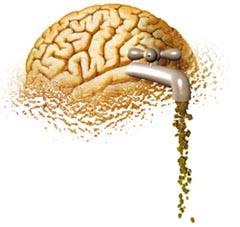
by Michael Woods
The United Nations Development Program, in a report published last year, described in often painful detail some of the factors that have contributed to the decline of science and the rise of extremism in Arab societies. Among them are:
Increases in average income have been lower in the Arab world than anywhere else for 20 years, except for the poorest African countries. “If such trends continue…it will take the average Arab citizen 140 years to double his or her income, whole other regions are set to achieve that level in a matter of less than 10 years,” the report noted. One in 5 Arabs lives on less than $2 a day.
Arab unemployment is the highest in the developing world.
Surveys show more than half of young Arabs want to leave their countries and live in the United States or other industrialized countries where opportunities are better.
The Arab brain drain is the world’s worst, with about 25 percent of new graduates in science, medicine and engineering emigrating each year.
About 1 in 4 Arab adults can neither read nor write. This is a particular problem among Arab women, 50 per cent of whom are illiterate. Many children do not attend school.
The quality of education has declined, with many schools teaching mainly interpretations of the Koran, rather than other knowledge or skills.
Less than 0.6 per cent of Arabs use the Internet and barely 1.2 percent have access to a personal computer. There are 18 computers per 1,000 Arabs, compared to the global average of 78.3.
During the entire 20th century, fewer than 10,000 books were translated into Arabic — equivalent to the number translated into Spanish in a single year. Religious books account for 17 per cent of new publications in Arab countries, compared to a world average of 5 per cent. Censorship stifles ideas, information and innovation. Numerous censors review book manuscripts, each with the power to edit text or demand revisions.
Excerpt from Michael Woods “Islam once at Forefront of Science,” Eastern Crescent, May, 2008